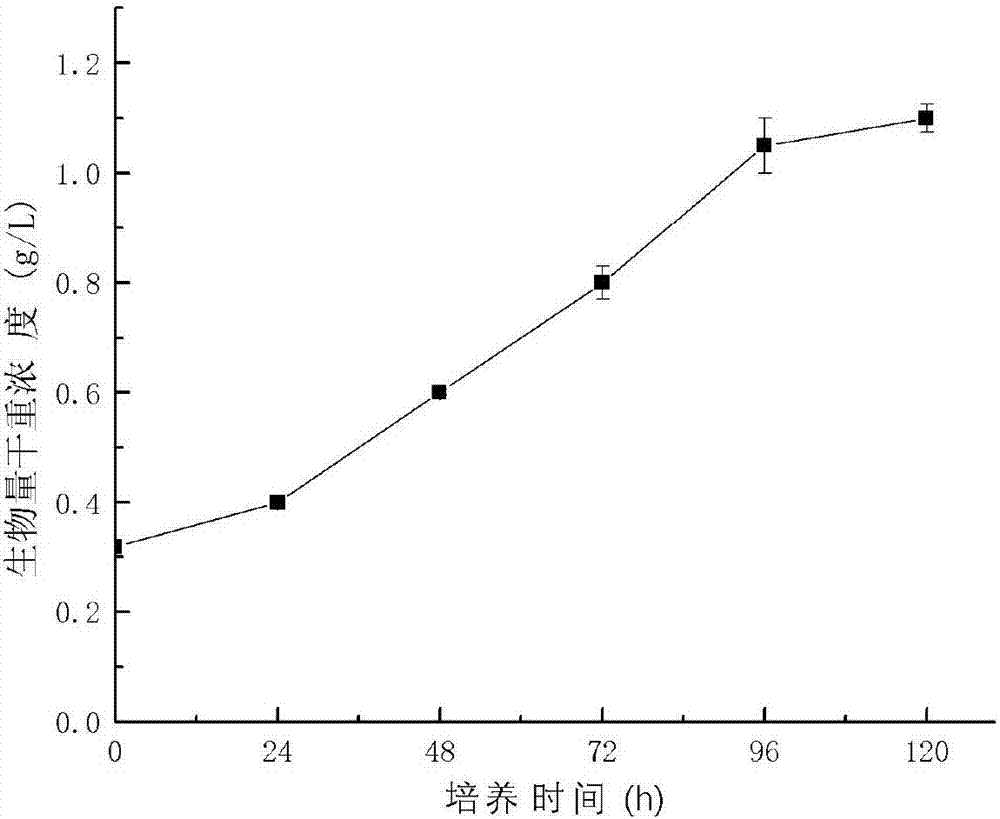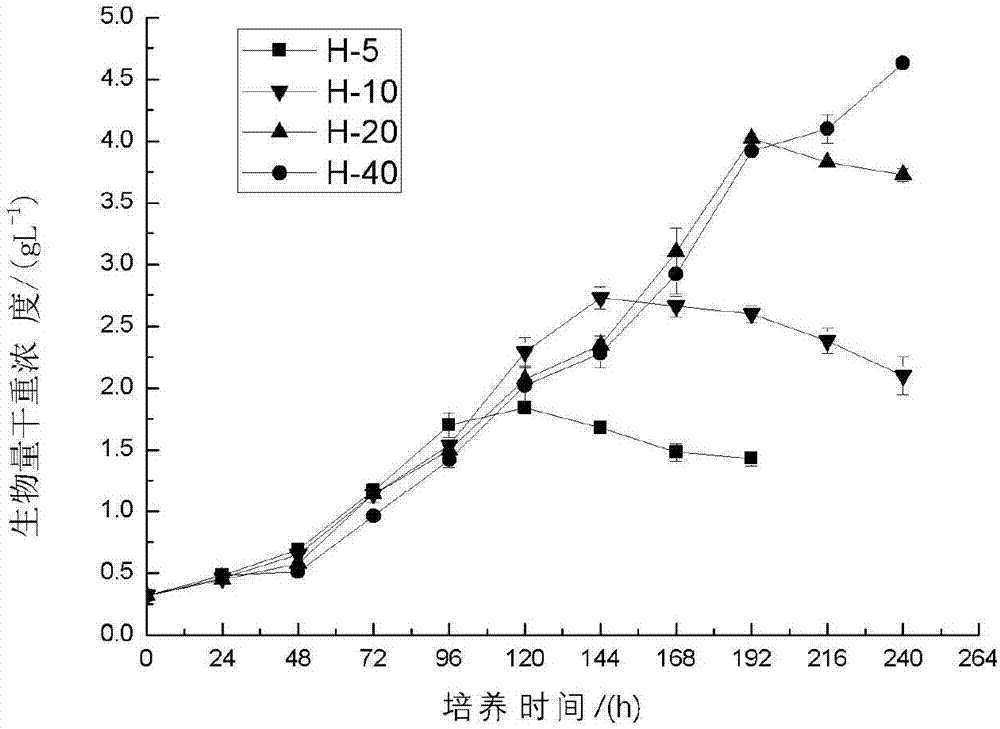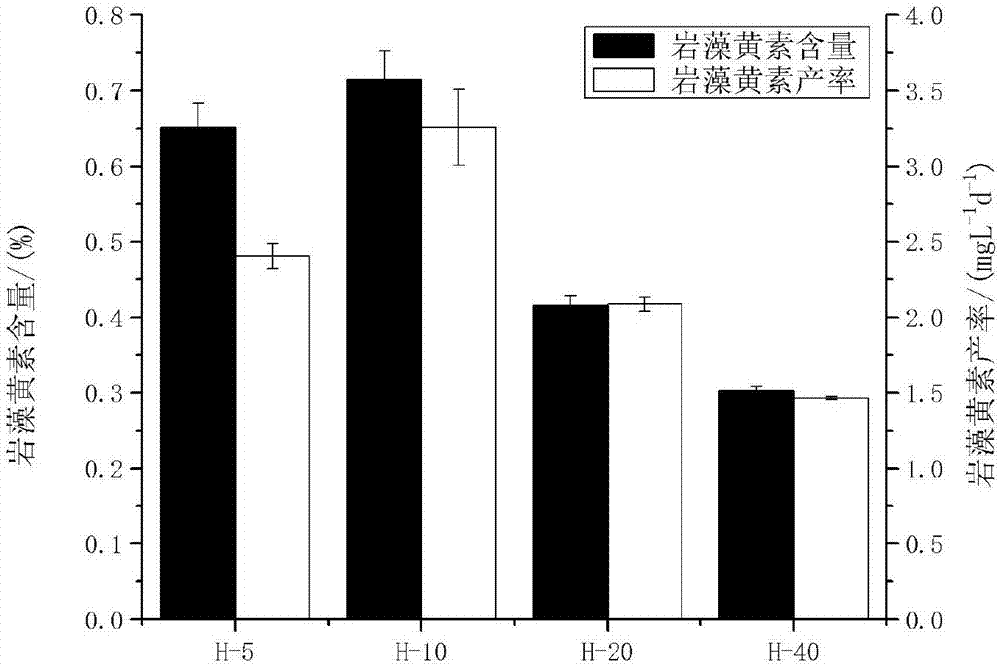Method for producing fucoxanthin by heterotrophic culture of smooth nitzschia
A technology of heterotrophic culture and fucoxanthin is applied in the field of fucoxanthin production by using heterotrophic culture of Rhizoma smoothie, which can solve problems such as optimization of culture conditions, and achieve the advantages of reducing production cost, reducing pollution risk and improving production efficiency. Effect
- Summary
- Abstract
- Description
- Claims
- Application Information
AI Technical Summary
Problems solved by technology
Method used
Image
Examples
Embodiment 1
[0054] Heterotrophic culture of Nitzschia smoothis
[0055] Nitzschia laevis UTEX 2047 (purchased from the Microalgae Collection of the University of Texas at Austin, Culture Collection of Algae at The University of Texas at Austin, UTEX for short) was selected as the production strain in this example.
[0056] A. Preparation of seed solution
[0057] Put the activated Nitzschia smoothii in a sterile seed medium for heterotrophic culture for 3-11 days to make a seed solution, so that the Nitzkiplankton cells are in the logarithmic growth phase;
[0058] B. Fermentation culture
[0059] Transfer the seed liquid in step A into a sterile fermentation medium according to the volume ratio of 10% inoculum to prepare a fermentation liquid on a shaker, and cultivate it under the conditions of a culture temperature of 23°C and a rotation speed of 150 rpm 5 days;
[0060] Described seed culture medium and fermentation medium comprise the raw material of following content scope:
[0...
Embodiment 2
[0066] Embodiment 2: Heterotrophic cultivation of Nitzschia smoothis
[0067]With a 250mL Erlenmeyer flask as a culture vessel, 100mL of fermentation medium was transferred, and the inoculation amount of 10% by volume was inserted into the fermentation medium for shaker culture. The culture conditions are as follows: the rotation speed of the shaker is 150 rpm, the temperature is 23° C., and the culture time is 5 days.
[0068] The fermentation medium and seed medium also include the following raw materials: NaNO 3 1g / L, all the other contents are with embodiment 1.
[0069] The difference between Example 3-5 and Example 2 is that the initial glucose concentration in Example 3-5 is 10g / L, 20g / L and 40g / L respectively, and the culture time is extended to 7, 9, 11 days respectively.
[0070] The effect analysis of embodiment 2-5:
[0071] see figure 2 and image 3 , different initial concentrations of glucose had a great influence on the growth and fucoxanthin content of ...
Embodiment 6-11
[0073] The difference between Examples 6-11 and Example 1 is that the nitrogen sources in Examples 6-11 are respectively 2g / L NaNO 3 、KNO 3 , NH 4 Cl, urea, peptone and yeast extract. All the other contents are the same as in Example 1.
[0074] The effect analysis of embodiment 6-11:
[0075] see Figure 4 , only 2g / L of sodium nitrate is used to detect that the content of fucoxanthin in the freeze-dried algal powder can be as high as 0.91%, and the content of fucoxanthin is greatly increased. Nitrogen sources Only use inorganic nitrogen sources—sodium nitrate or potassium nitrate can get higher content of fucoxanthin, while the content of fucoxanthin obtained when only organic nitrogen sources peptone and yeast extract are used is lower than when only inorganic nitrogen sources are used Fucoxanthin content.
PUM
 Login to View More
Login to View More Abstract
Description
Claims
Application Information
 Login to View More
Login to View More - R&D
- Intellectual Property
- Life Sciences
- Materials
- Tech Scout
- Unparalleled Data Quality
- Higher Quality Content
- 60% Fewer Hallucinations
Browse by: Latest US Patents, China's latest patents, Technical Efficacy Thesaurus, Application Domain, Technology Topic, Popular Technical Reports.
© 2025 PatSnap. All rights reserved.Legal|Privacy policy|Modern Slavery Act Transparency Statement|Sitemap|About US| Contact US: help@patsnap.com



